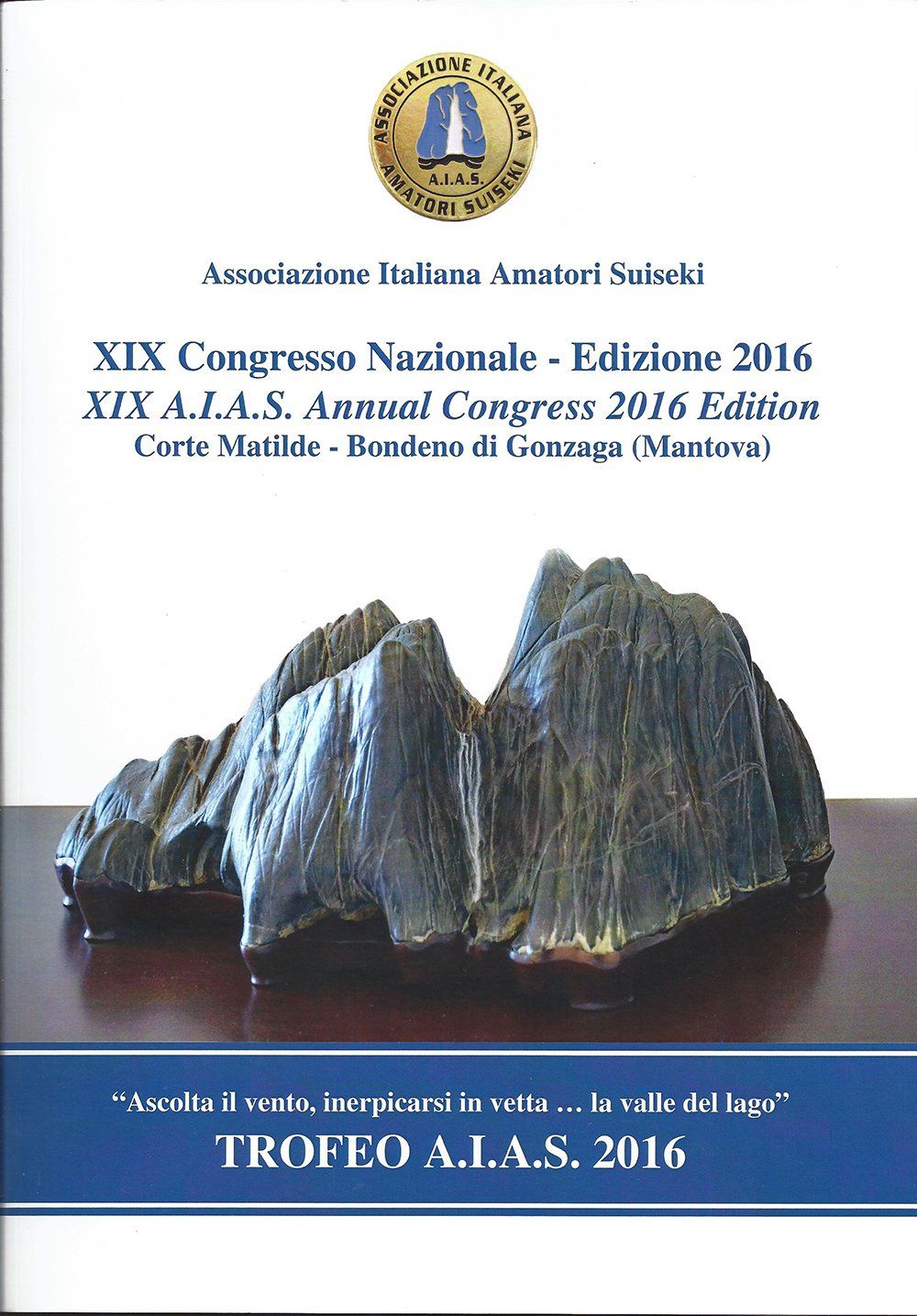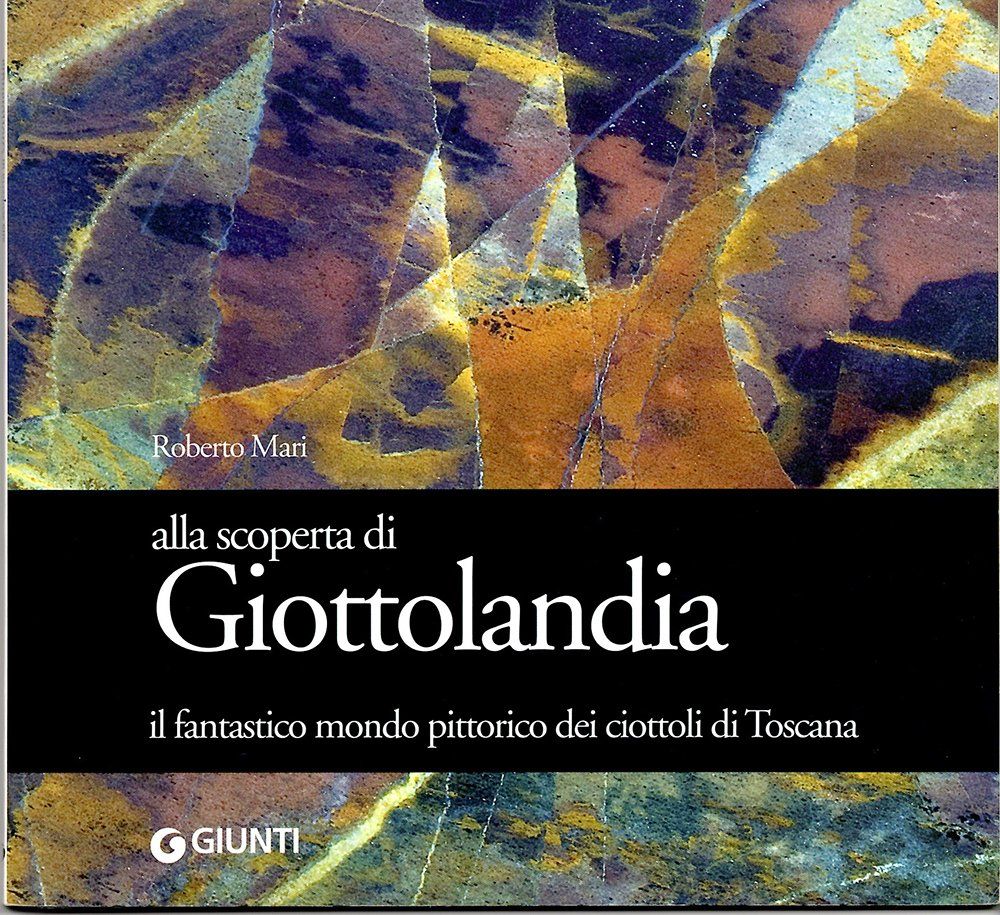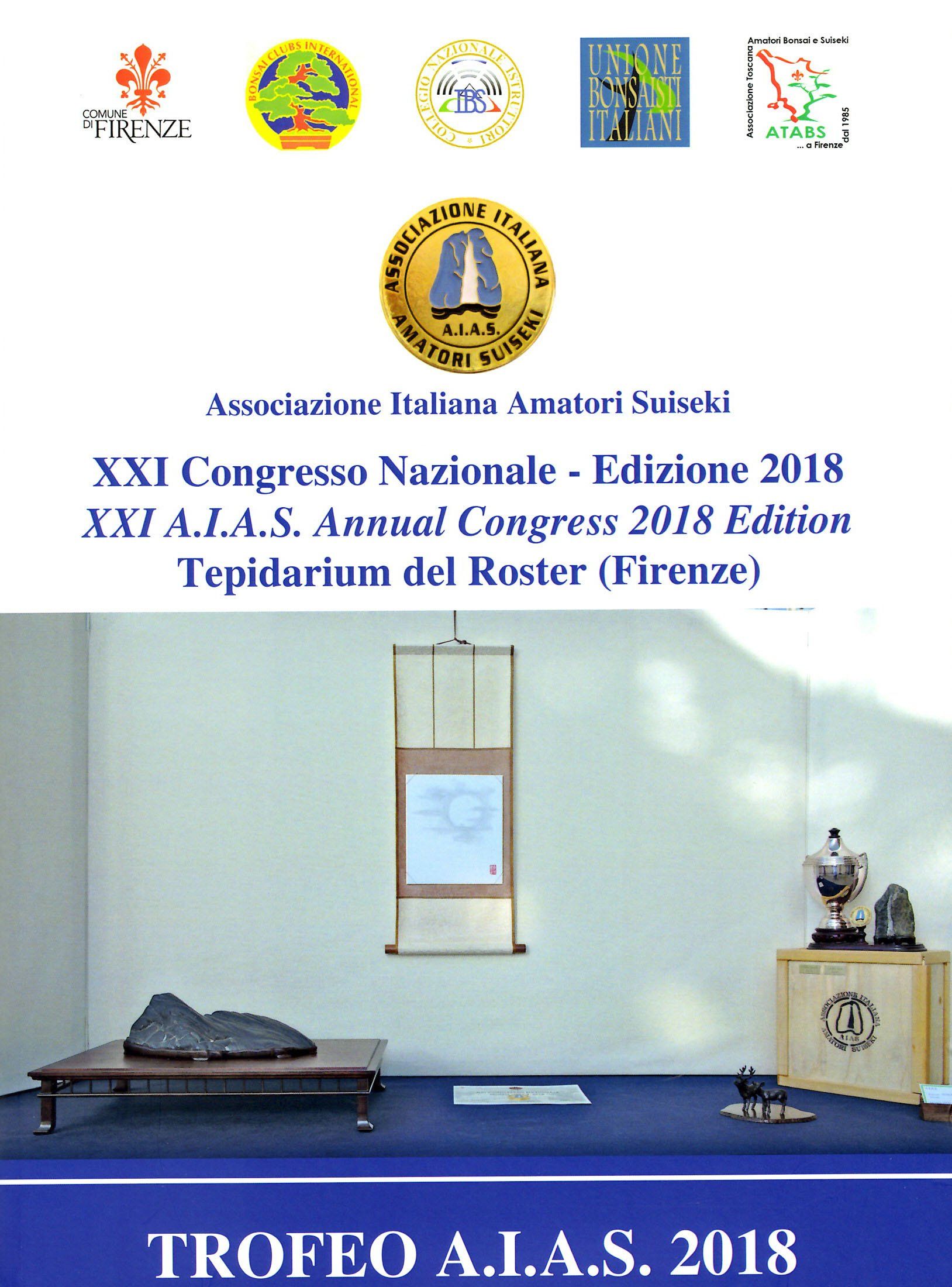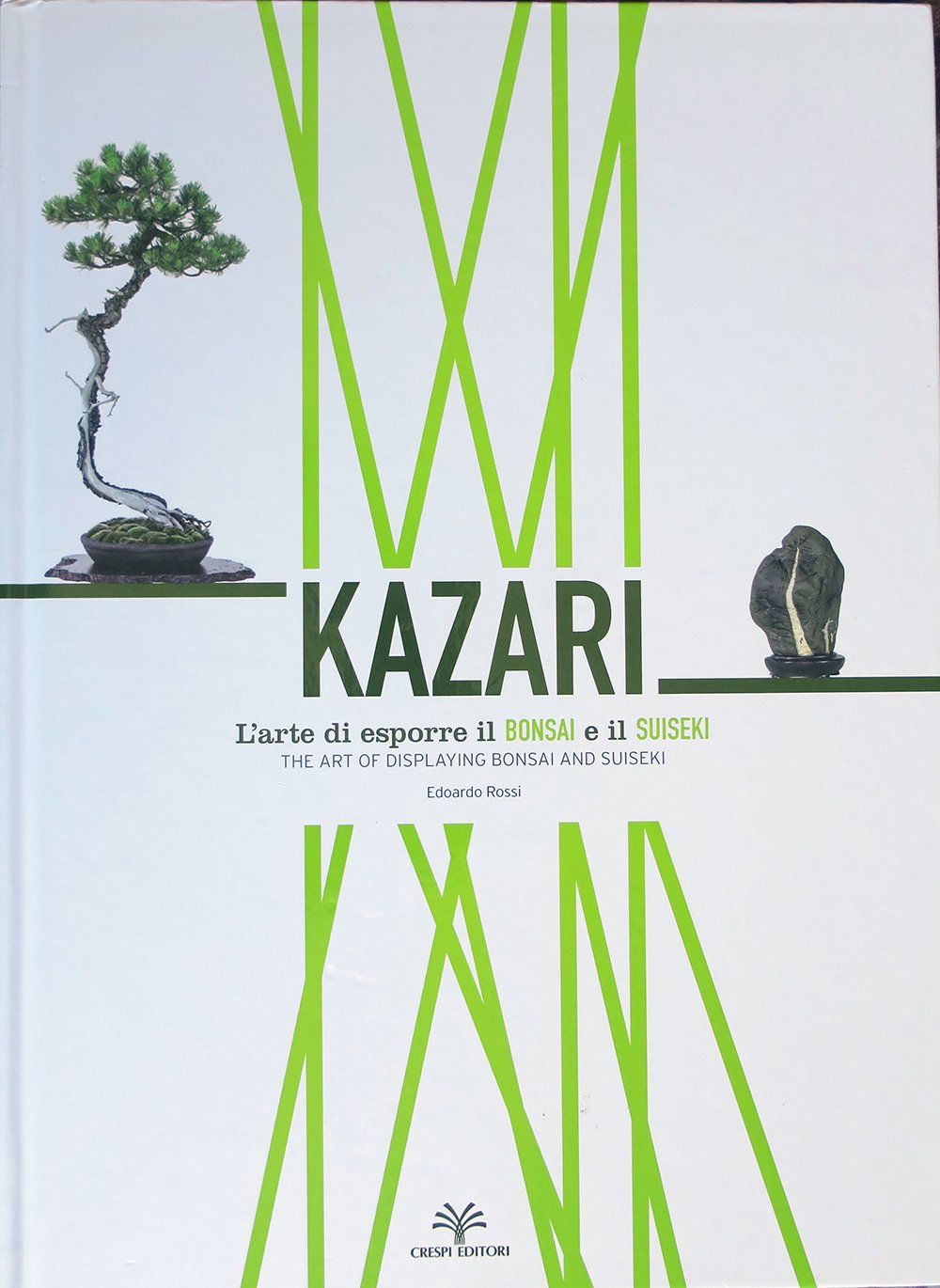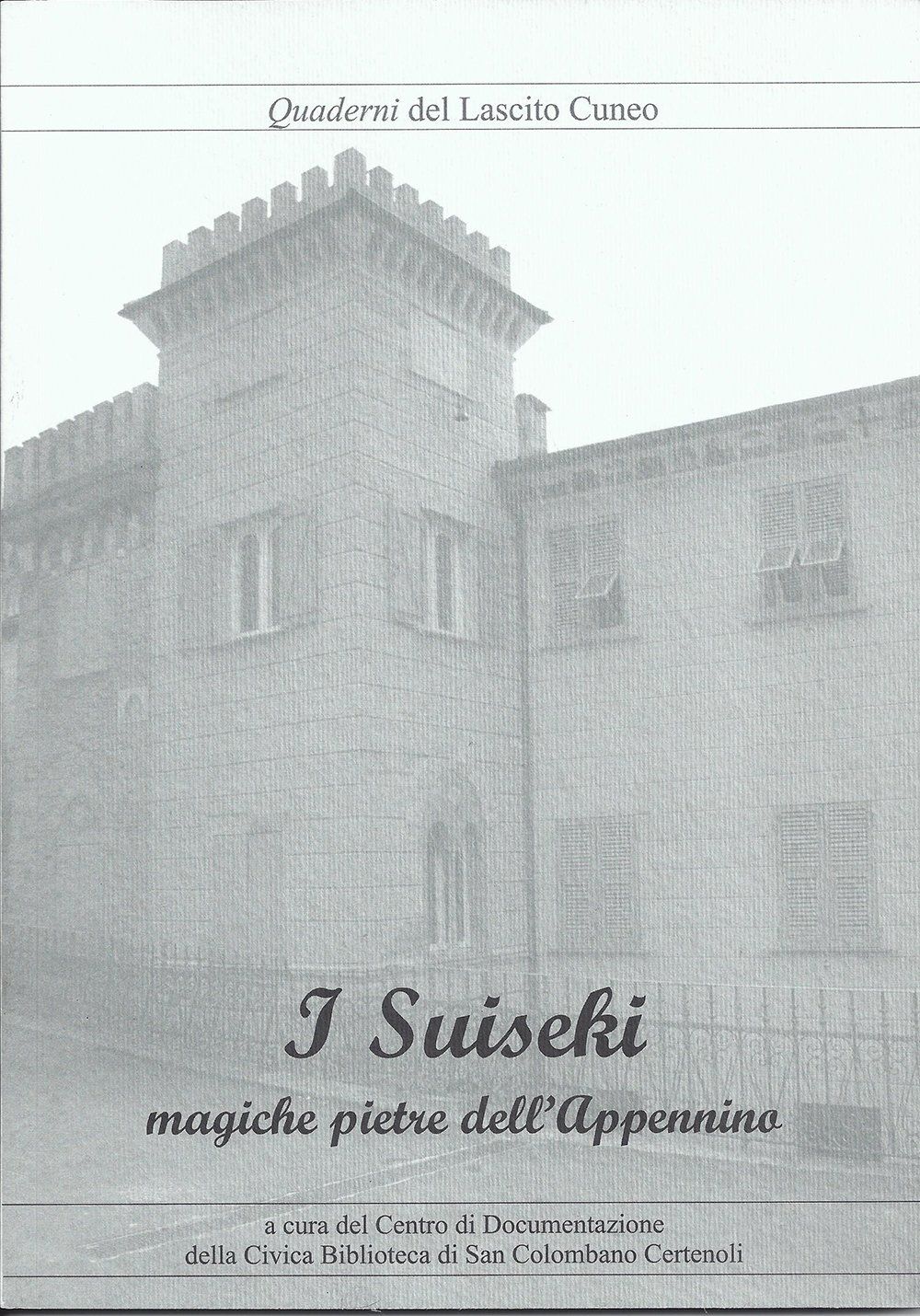ITALIAN BOOK REVIEWS
AIAS. 2024
AIAS. 2024
Rating: Excellent, a beautifully produced book, and an important reference to southern European stones.
Associazione Italiana Amatori Suiseki. 180 pages, No ISBN.
n late October 2024, the AIAS held its 27th annual congress and exhibition in Martina Franca in Puglia Italy. The annual meetings are held in different regions of Italy and are typically hosted by a local bonsai club. Once again, the AIAS staged an exceptional display of 83 stone displays. A remarkable diversity of fine stones was exhibited. The rocks were assigned to one of five broad categories: landscape, object, biseki, contemplative, and multiple stones.
This year, viewing stone connoisseur Martin Pauli, an artist and maker of fine watches, from Switzerland was the honored guest and judge. Once the judging was completed and awards presented, Pauli led a walking tour of the exhibit and comments on each stone for the participants. This volume has a detailed account of the evaluation system Pauli used to judge the exhibition. This system is based on Japanese standards for displaying suiseki in a tokonoma. He used a point-based system using twelve criteria.
This volume is a valuable reference for serious students of viewing stone appreciation. Attending one of the AIAS annual exhibitions is a treat and a good learning experience. Investing in a trip to Italy to attend their next exhibition in the future is highly recommended.
AIAS. 2023
Associazione Italiana Amatori Suiseki
Rating: Excellent, a fine volume that features some of the finest viewing stones collected in Italy. This is a must-have book for stone connoisseurs worldwide.
144 pages. No ISBN. No Price given
Year after year, the AIAS stages a major exhibition primarily of excellent Italian viewing stones. Their 26th annual Congress, held October 13-15 in Forli, Italy, demonstrates the leadership role that the AIAS plays in European stone appreciation. This is due, in large part, to the officers of this fine organization headed by their president Luciana Queirolo. Approximately 12,000 people viewed this exhibit.
The twenty-six AIOAS Congress was held in Forti, Italy was hosted by the Bonsai Club Forli. This year’s exhibition consisted of 79 displays, including eight multi-tiered stands with several small rocks. Each of the seventy-nine displays is included in this catalog. The stunning photographs in this catalog were taken by Ulisse Maccaferri, a long-time member of the AIAS. The text is in Italian and English.
The award-winning stones and stone displays in the exhibition are presented first, followed by the stones in five distinct categories: landscape (36), object (18), biseki (5), contemplative (12), and multiple stones (8). Chiara Padrini, one of the founders of the AIAS, was invited to judge the 79 entries and comment on the stones. Her comments on the award winners are given at the end of this volume.
AIAS, 2021
Suiseki
Rating: Excellent, a valuable reference for viewing enthusiasts and stone connoisseurs
Associazione Italiana Amatori Suiseki. 118 pages. No ISBN. No price given
The Associazione Italiana Amatori Suiseki (AIAS) held its 24th annual congress and an exhibition in the Stazione Leopolda in Pisa from November 5-7, 2021. The event, featuring 79 stones, was hosted by the Bonsai Art Club of Pisa. The majority of the suiseki on display were either landscape or object types. This volume documents this important display of high-quality stones. Each stone in the exhibit was allotted a full page, thus, it is possible to observe detailed aspects of each entry.
Landscape and object-shaped limestone rocks dominated the entries in this book. Stones from other regions of Italy are becoming more frequent at the AIAS conventions. Excellent stones are exhibited from Tuscany, Calabria, Puglia, Dalmazia, Campania, and Lombardy. An award-winning stone from Calabria in the biseki category is reminiscent of some of the colorful red and green stones found in the northern California Trinity River watershed. Several susieki from Japan were also displayed in this three-day exhibition.
The AIAS has rightfully earned a reputation for staging well-thought-out displays of excellent stones. Their annual exhibitions are among the best in Europe.
AIAS, 2020
Suiseki
Rating: Excellent, a must for serious students of viewing stones and suiseki.
Associazione Italiana Amatori Suiseki. 105 pages, no ISBN. No price given.
The Associazione Italiana Suiseki (AIAS) was unable to hold their annual convention and exhibition due to the Covid-19 virus. Instead, the AIAS invited its members to participate iualityqn a project to publish a photo catalog of outstanding stones. Each member submitted multiple photographs of one stone for evaluation. If accepted, the images were sent to Martin Pauli, a well-respected European connoisseur of Japanese susieki, for comment. Pauli wrote his opinion on a series of features for each stone included in this volume. These features are form, mass and shape, quality, color, texture, age, natural feeling, and daiza.
The vast majority of the stones featured in this book are Italian, followed by several entries from other European countries, and a few stones from Japan. The quality of the stones illustrated in this volume is a clear indication of the advanced level of understanding among the members of AIAS of the Japanese style stone appreciation. Fifty stones are included, each with a full-page photograph and an opposing page of comments by Martin Pauli. The combination of quality photographs together with Pauli’s assessments make this is truly an outstanding contribution from one of the world’s leading organizations.

